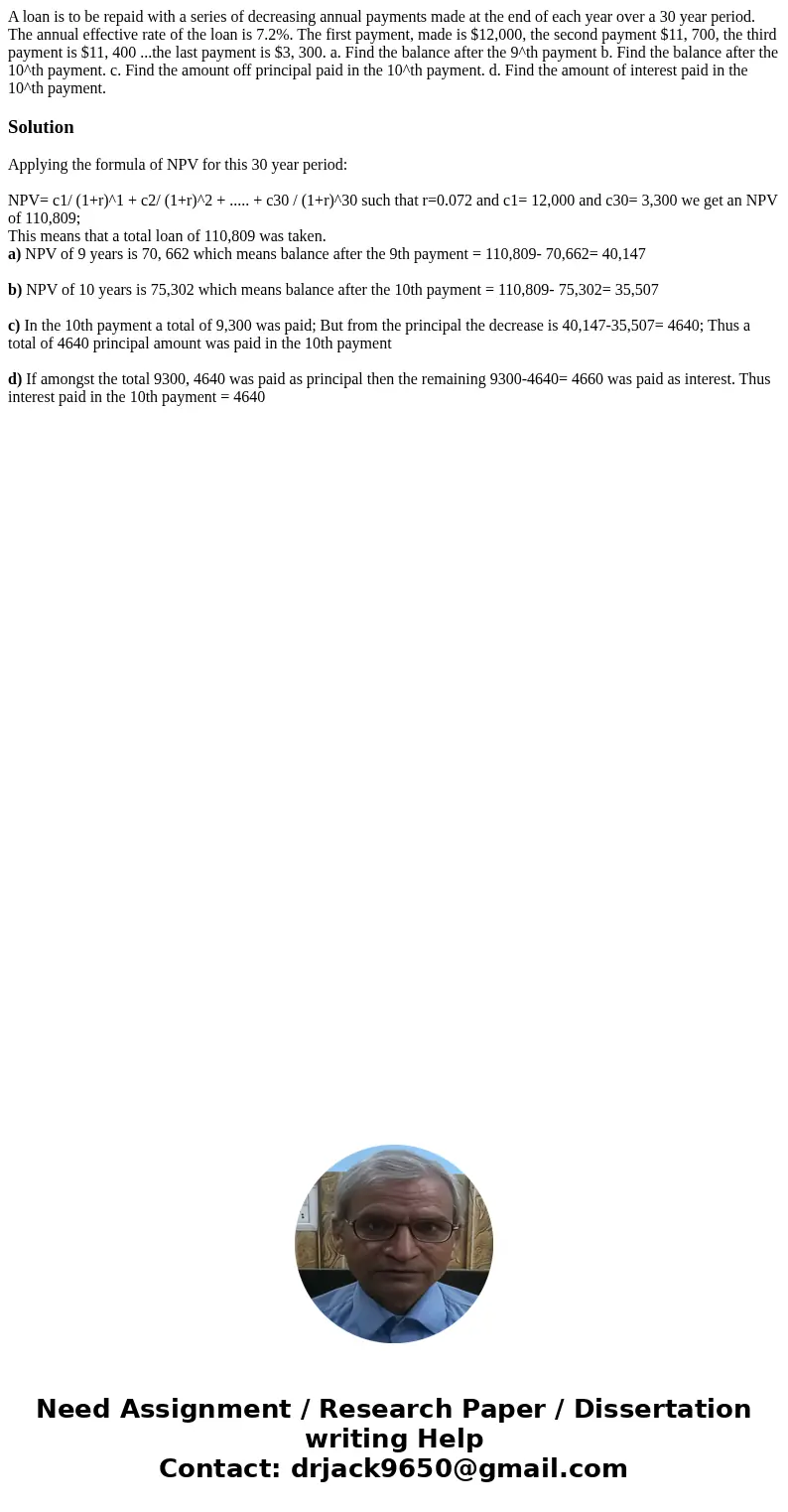A loan is to be repaid with a series of decreasing annual pa
Solution
Applying the formula of NPV for this 30 year period:
NPV= c1/ (1+r)^1 + c2/ (1+r)^2 + ..... + c30 / (1+r)^30 such that r=0.072 and c1= 12,000 and c30= 3,300 we get an NPV of 110,809;
This means that a total loan of 110,809 was taken.
a) NPV of 9 years is 70, 662 which means balance after the 9th payment = 110,809- 70,662= 40,147
b) NPV of 10 years is 75,302 which means balance after the 10th payment = 110,809- 75,302= 35,507
c) In the 10th payment a total of 9,300 was paid; But from the principal the decrease is 40,147-35,507= 4640; Thus a total of 4640 principal amount was paid in the 10th payment
d) If amongst the total 9300, 4640 was paid as principal then the remaining 9300-4640= 4660 was paid as interest. Thus interest paid in the 10th payment = 4640

 Homework Sourse
Homework Sourse